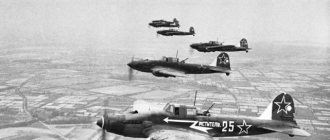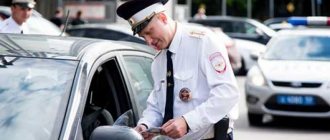Interesting Facts
Special purpose units (CHON) began to be created in 1918. They were directly subordinate to the All-Russian Extraordinary Commission and fought against the Basmachi in Central Asia and the people's armed forces.
Tattoos are prohibited in special forces units. Therefore, only after leaving service can military personnel make a drawing of a bat (the emblem of military intelligence) or any other pattern.
Only a select few can receive a maroon beret. To do this, you must pass the preliminary and main tests. The first includes theoretical knowledge and fire, physical and tactical training. The main test consists of 7 stages: a forced march of 10 kilometers with overcoming obstacles (shelling, water barriers, swamps, evacuation of the wounded, and so on), passage of a special strip with smoke immediately after the forced march, then rapid fire, storming high-rise buildings, acrobatic exercises, performing a set of special exercises and, finally, holding a fight.
The budget of Russian special forces is spent only on increasing the level of training of military personnel, while 20% of the similar US budget is spent on improving the image of the rangers, that is, on propaganda throughout the world.
Special purpose risk
Special Forces Day was officially established on May 31, 2006 by Decree of the President of the Russian Federation Vladimir Putin. This was an act of recognition of the merits that army and navy special intelligence entered into the history of the Armed Forces of the USSR and the Russian Federation. Especially considering the role of the GRU special forces during many years of counter-terrorism operations in the North Caucasus.
GRU special forces as a separate type of military units appeared in pursuance of the secret Directive of the USSR Minister of War N ORG/2/395/832 of October 24, 1950. On its basis, 46 separate special reconnaissance companies of 120 people each were created in all military districts. The level of secrecy surrounding these units is evidence of the importance attached to them. Even in the top leadership of the Ministry of Defense, very few knew about the existence of special forces, much less about their tasks. And a thick veil of secrecy almost destroyed these units at the very beginning of their birth.
When Khrushchev came to supreme power in the USSR, he began reducing the Armed Forces of the USSR. 35 special forces companies were disbanded, leaving 11. Marshal of the Soviet Union Georgy Zhukov, who became Minister of Defense in 1955, tried to correct this obvious mistake. In 1957, five separate special forces battalions were formed. Further, according to experts who professionally study this topic, Georgy Zhukov wanted to create Special Forces. Khrushchev found out about this and believed that the Marshal of Victory was preparing a military coup, which would be carried out by these completely secret units. In the fall of 1957, Georgy Zhukov lost his post as minister, and the development of special forces froze again.
But common military sense took its toll. In June 1961, little known to the general public, a decree of the CPSU Central Committee “On the training of personnel and the development of special equipment for organizing and equipping partisan detachments” was issued. It is worth noting that we were talking about partisan detachments. And this was done not only in order to mislead potential opponents, but because the concepts of “special forces” and “partisans” are identical. Then several directives of the General Staff were issued and the formation of full-fledged special-purpose reconnaissance brigades began.
In the event of a threat of a major war in the USSR, it was planned to quickly deploy 66 special forces units and formations numbering 44,845 people
It is no longer a secret that before the start of our Afghan war, the USSR had 23 special reconnaissance units with a total number of about 8,000 people. In the event of a threat of a major war, it was planned to quickly deploy 66 special forces units and formations numbering 44,845 people.
And if aggression against the USSR became inevitable, then hundreds of reconnaissance and sabotage groups had to be sent to NATO countries, including the USA, at once. Without any particular problems they could paralyze command and control of troops and disable the maximum number of strategic facilities, including nuclear missile facilities. Most likely at the cost of his life. But the level of moral training of our scouts was such that they would without a doubt go to their last battle. Although it is not a fact that all special forces would be doomed. Their combat training was so high that it allowed them to survive in seemingly hopeless situations.
There was no big war. Guerrilla wars began in different parts of the world. And this is the native element of special-purpose intelligence. That is why in Afghanistan the capabilities of the GRU special forces were demonstrated, although not fully, but more than clearly.
Two GRU special forces brigades operated in Afghanistan - the 15th and 22nd. For example, from 1986 to 1988 - the period of the most active hostilities - one 15th brigade, commanded by Colonel Yuri Starov, lost 140 soldiers and officers killed. At the same time, its scouts destroyed and captured about 9,000 armed dushman militants. In 1987 alone, the brigade's reconnaissance officers destroyed 332 caravans with weapons and ammunition, captured 290 heavy weapons, and 80 man-portable anti-aircraft missile systems.
Thus, they saved the lives of thousands of military personnel of the limited contingent of our troops in Afghanistan and civilians in this country.
The first use of Stinger man-portable anti-aircraft missile systems in Afghanistan was recorded at the end of November 1986. And already on January 5, 1987, reconnaissance officers of the 22nd brigade of Colonel Dmitry Gerasimov in the area of the village of Kalat were able to capture three sets of this complex intact and intact with all the accompanying documentation.
The group of special forces was commanded by Major Evgeny Sergeev. For some reason, neither he nor the other intelligence officers who participated in the capture of the latest American MANPADS were awarded the title of Hero of the Soviet Union.
Reserve Lieutenant General Dmitry Gerasimov told RG that his intelligence officers were able to establish that at that time a mobile group of Stinger shooters, specially trained by US instructors, was operating in Afghanistan. It was headed by “engineer” Gafur, a legendary personality in his own way. The special forces established the group's deployment area and almost completely destroyed it, along with dozens of Stingers. Most of the caravan routes along which these complexes were delivered to Afghanistan were blocked.
An example of the conditions under which special forces soldiers and officers had to work at that time is the fate of a GRU officer, at that time still captain Renat Shafikov.
The blood of many eastern peoples flows in his veins, and they all recognize him as their own. Moreover, he has a good command of the languages that were in use in Afghanistan. Shortly before the end of the war across the river, he was introduced into one of the largest drug cartels of the so-called Golden Crescent. And so, when he accompanied a drug caravan heading to Tajikistan, the caravan was ambushed by one of the GRU units. Almost everyone was killed, and Renata and several wounded dushmans were shot. Their!
Fortunately, the wounds were severe, but not fatal. He was saved by an agent he recruited from the same cartel. Renat was found and evacuated to Tashkent.
Then he worked in Transcaucasia when interethnic strife began there. In the 1990s - in Central Asia, mostly illegally.
In Tajikistan, at the beginning of the civil war there, he was introduced into one of the most extremist groups, which was eventually eliminated. It was a time of widespread publicity. And one of the nosy journalists of a popular Moscow newspaper wrote an incriminating article about the GRU’s interference in the internal affairs of Tajikistan. It mentioned the information by which Renat was identified. He himself managed to escape. But the bandits, hiding behind the banner of Islam, found his wife and demonstratively shot him in broad daylight.
Such is the fate and professional risk of a special-purpose intelligence officer. By the way, Shafikov officially served in the armies of the USSR, Tajikistan, Uzbekistan and Russia. Each of them could award him the title of hero of their country. They didn’t appropriate it.
When asked if he regrets the years he has lived and would not want to change his fate, Shafikov replied that he does not regret anything. If it had started all over again, he would simply have acted more cautiously in some cases. And he is proud that during all the wars in which he participated as a combat commander, he did not lose a single soldier subordinate to him.
Several years ago, Special Operations Forces were created in our country. The personnel backbone of these forces consisted of the best GRU special forces officers. So if now the army special forces have actually been withdrawn from the Main Intelligence Directorate and reassigned to the Ground Forces, the Special Operations Forces have become its successors on the world stage.
Alpha Squad
The detachment was formed in the USSR in 1974 and continues to operate in modern Russia. One of the most famous special forces ensuring national security. The main tasks of the detachment are to carry out special operations to prevent terrorist acts, free hostages, and search for and eliminate terrorists.
The detachment carries out operations of the Security Service of particular complexity, works in “hot spots”, in particular, on the territory of the Russian republics. Alpha conducts anti-terrorist operations using special means and tactics. The usual work of the unit’s fighters is to eliminate the enemy who is capturing ships and planes, vehicles, and holding hostages in the premises.
Squad "Vympel"
The unit was created in 1981 in the USSR to conduct operations outside the country. In Russia, it participates in anti-terrorist operations carried out at strategic sites and environmentally hazardous enterprises on the territory of the Russian Federation. It operates in other countries, protects Russian citizens, and fights international terrorism. Information about the detachment's activities is mostly classified.
Squad "Ratnik"
Created in 2002 as a special unit of the Internal Troops of the Ministry of Internal Affairs. Since 2021, it is subordinate to the Russian Guard. Soldiers serve on a contract basis and are systematically required to pass qualification tests. "Ratnik" participates in the elimination of illegal formations, criminal and terrorist groups. Suppresses riots, confiscates unregistered weapons from the population.
The unit’s tasks include neutralizing criminals who have taken hostages, special cargo, government facilities, and government buildings. "Ratnik" ensures the safety of officials and Russian citizens in special situations.
Special forces today
Today, special forces are mobile, superbly equipped units with the most trained fighters. Russian special forces are fluent in methods of conducting covert and daring actions on enemy territory, various types of firearms and bladed weapons, hand-to-hand combat, are trained in mine demolition, can jump with a parachute, and so on.
Special forces formations, units and units are ready to successfully solve the tasks assigned to them both in war and in peacetime, especially during periods of aggravation of the international situation, in local armed conflicts, and in emergency situations. They can conduct reconnaissance and counterintelligence, sabotage, anti-sabotage and anti-terrorism activities, capture or destroy terrorists, free hostages, carry out rescue operations, protect especially important persons or especially important objects, and so on.
According to tradition, special forces celebrate their professional holiday with a solemn march and a festive concert; on this day, the best soldiers and units are awarded, RIA Novosti reports.










